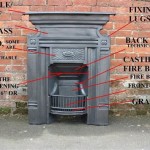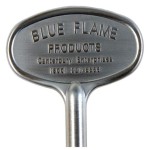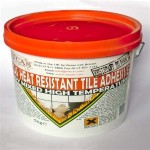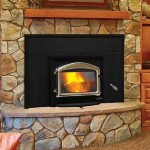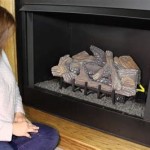Outdoor Stone Fireplace Ideas: Creating a Warm and Inviting Outdoor Space
An outdoor stone fireplace provides a focal point and a functional element that enhances the ambiance of any patio, deck, or backyard. It extends the usability of outdoor spaces into cooler months, creating a gathering place for relaxation, entertainment, and enjoying the beauty of nature. The selection of a stone fireplace involves considering design, materials, functionality, and cost, ensuring a harmonious blend with the existing landscape and architectural style.
Design Considerations for Outdoor Stone Fireplaces
The design phase is crucial in determining the overall aesthetic and functionality of the outdoor stone fireplace. Several factors must be considered, including the available space, the desired style, and the intended use of the fireplace.
Firstly, the size and layout of the outdoor area dictate the appropriate scale of the fireplace. A large, imposing fireplace may overwhelm a small patio, while a smaller fireplace might be insufficient for a large backyard. Careful measurement and assessment of the available space are necessary to determine the optimal dimensions.
Secondly, the architectural style of the house and the surrounding landscape must be taken into account. A rustic stone fireplace might complement a traditional or natural setting, while a more modern design may suit contemporary homes. The style should integrate seamlessly with the existing aesthetics to create a cohesive and visually appealing outdoor space.
Thirdly, consider the intended use of the fireplace. Will it primarily serve as a source of warmth and ambiance, or will it also be used for cooking? If cooking is a priority, features like a built-in grill or pizza oven can be integrated into the design. The design should also address functionality, such as providing seating areas around the fireplace and ensuring adequate ventilation.
Various design styles can be explored, ranging from traditional to contemporary. A traditional stone fireplace often features natural, rough-hewn stones, creating a rustic and timeless look. These fireplaces may incorporate features like a raised hearth, a large chimney, and decorative stonework. Contemporary designs, on the other hand, tend to be more streamlined and minimalist, often using smooth, polished stones or concrete with stone veneer. They may feature clean lines, geometric shapes, and integrated lighting.
Ultimately, the design should reflect personal preferences and complement the overall outdoor living space. Consulting with a landscape architect or a fireplace specialist can provide valuable insights and ensure that the design meets all functional and aesthetic requirements.
Material Selection for Outdoor Stone Fireplaces
The choice of materials significantly impacts the appearance, durability, and cost of the outdoor stone fireplace. Different types of stone offer varying textures, colors, and properties, each contributing to the unique character of the fireplace.
Natural stone is a popular choice for outdoor fireplaces due to its durability, natural beauty, and ability to blend seamlessly with the outdoor environment. Common types of natural stone include:
- Fieldstone: This type of stone is characterized by its irregular shapes and earthy tones. Fieldstone is often sourced from natural landscapes and provides a rustic, organic look.
- Limestone: Limestone offers a more uniform texture and a range of colors from light gray to beige. It is relatively soft and easy to work with, making it suitable for intricate designs.
- Sandstone: Sandstone is known for its distinctive layered appearance and warm, earthy colors. It is durable and weather-resistant, making it a good choice for outdoor applications.
- Granite: Granite is one of the hardest and most durable types of stone, making it ideal for fireplaces that will be exposed to harsh weather conditions. It comes in a variety of colors and textures, offering a more contemporary look.
In addition to natural stone, manufactured stone veneer can be used as an alternative. Stone veneer is lighter and less expensive than natural stone, making it a cost-effective option. It is available in a wide range of styles and colors, mimicking the look of natural stone while offering greater design flexibility.
The selection of stone should also consider the local climate. Some types of stone are more resistant to freeze-thaw cycles than others, making them better suited for colder climates. It is important to choose materials that can withstand the specific environmental conditions of the region.
The mortar used to hold the stones together also plays a crucial role in the fireplace's durability and appearance. The color and texture of the mortar can either blend seamlessly with the stone or provide a contrasting accent. Proper mortar application is essential to ensure a strong and weather-resistant structure.
Sourcing materials from reputable suppliers is crucial to ensure quality and consistency. Inspecting the stone for cracks, chips, and other imperfections before installation is recommended. Consulting with a stone mason or fireplace specialist can provide guidance on selecting the appropriate materials for the specific project.
Construction and Installation of Outdoor Stone Fireplaces
The construction of an outdoor stone fireplace requires careful planning, precise execution, and adherence to safety regulations. It is generally recommended to hire a qualified contractor or mason with experience in building outdoor fireplaces.
The first step in the construction process is to prepare the foundation. A solid and level foundation is essential to ensure the stability and longevity of the fireplace. The foundation should be constructed of concrete and reinforced with steel rebar. The size and depth of the foundation will depend on the size and weight of the fireplace.
Once the foundation is in place, the construction of the fireplace can begin. The stones are carefully laid, starting from the base and working upwards. Mortar is used to bind the stones together, creating a strong and weather-resistant structure. The stones should be arranged in a visually appealing pattern, taking into account the desired style and aesthetic.
As the fireplace is being built, it is important to incorporate proper ventilation. A well-designed chimney is essential to ensure efficient smoke removal and prevent dangerous carbon dioxide buildup. The chimney should be sized appropriately for the firebox and should extend high enough above the roofline to prevent downdrafts.
The firebox is the heart of the fireplace and must be constructed of fire-resistant materials. Firebricks are commonly used to line the firebox, providing insulation and protecting the surrounding stonework from the intense heat. A metal fire grate is typically installed to support the wood and allow for proper airflow.
Safety is paramount during the construction process. All work should be performed in compliance with local building codes and safety regulations. Proper safety equipment, such as gloves, eye protection, and dust masks, should be worn at all times. It is important to ensure that the fireplace is located a safe distance away from flammable materials, such as trees, fences, and buildings.
After the fireplace is complete, it should be inspected by a qualified professional to ensure that it is safe and functional. The chimney should be swept and inspected regularly to prevent creosote buildup, which can pose a fire hazard. It is also important to follow proper fire safety practices, such as never leaving a fire unattended and using a fire extinguisher to put out the flames.
Proper maintenance is essential to prolong the life of the outdoor stone fireplace. The stonework should be cleaned periodically to remove dirt, moss, and other debris. Any cracks or damage should be repaired promptly to prevent further deterioration. With proper care and maintenance, an outdoor stone fireplace can provide years of enjoyment and enhance the beauty of any outdoor living space.
Adding personal touches can elevate the fireplace design. Consider incorporating features like a built-in wood storage area, a decorative mantel, or integrated lighting. These customizations can enhance the functionality and aesthetic appeal of the fireplace, making it a unique and inviting focal point.
Landscaping around the fireplace can further enhance the outdoor space. Planting trees, shrubs, and flowers can create a natural and inviting setting. Adding comfortable seating, such as outdoor sofas, chairs, and benches, can transform the fireplace area into a cozy gathering place for family and friends.
The integration of an outdoor stone fireplace into a comprehensive outdoor living space requires careful planning and execution. By considering design, materials, construction, and maintenance, it is possible to create a beautiful and functional focal point that enhances the enjoyment of the outdoors for years to come.

30 Outdoor Fireplace Ideas Cozy Fireplaces

Outdoor Fireplace Design Ideas Getting Cozy With 10 Designs Unilock

53 Most Amazing Outdoor Fireplace Designs Ever Chimeneas Diseño De Chimenea Cocina Al Aire Libre

Amazing Fire Pit Outdoor Fireplace Ideas Natural Brick Stone Depot

Outdoor Fireplace Design Ideas

Five Fabulous Outdoor Fireplace Ideas Coogans Landscape Design

Natural Stacked Stone Veneer Fireplace Ideas

Tag Archive For Outdoor Fireplace Ideas Landscaping Company Pa Custom Pools Walkways Patios Fence Companies Decks

75 Small Outdoor With A Fireplace Ideas You Ll Love February 2024 Houzz

45 Beautiful Outdoor Fireplace Ideas Install It Direct
Related Posts

